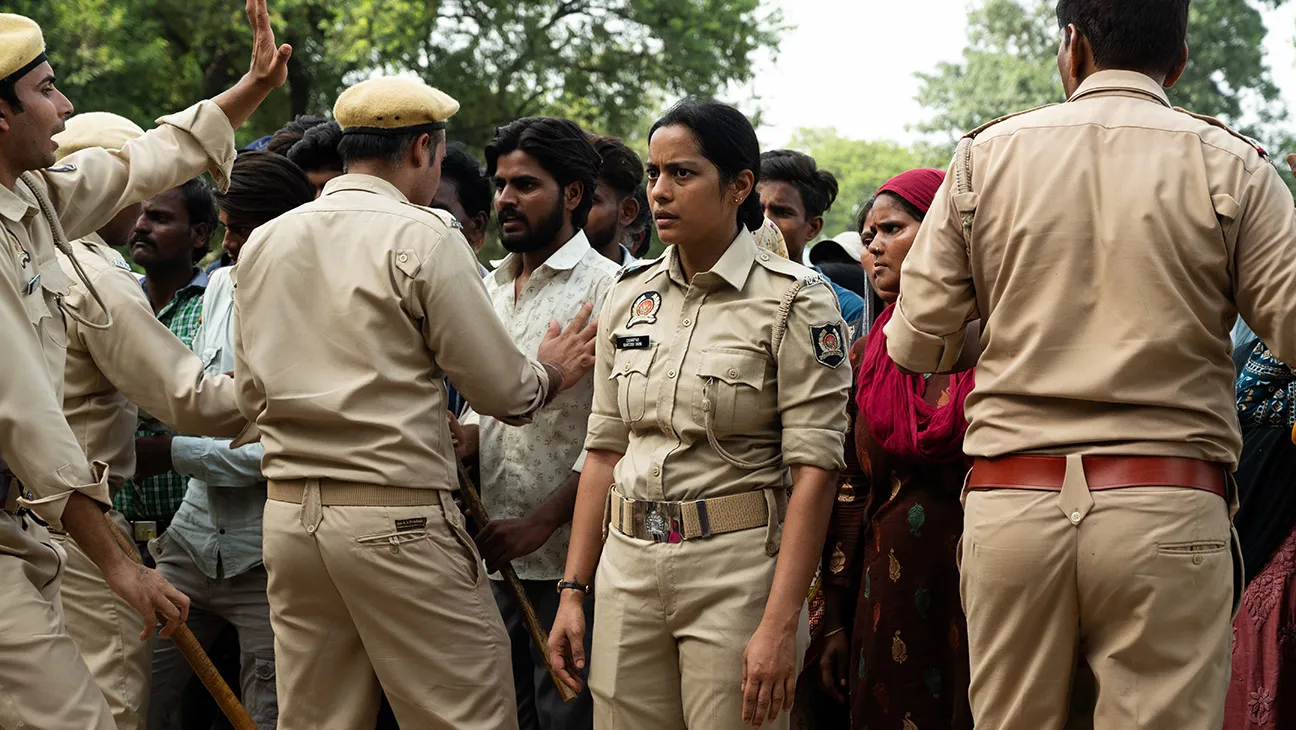
(Check out Hannah Tran’s Santosh movie review, in theaters now. Seen it? Join the conversation with HtN on our Letterboxd Page.)
“There are two types of untouchables in this world,” begins the imperative line of director Sandhya Suri’s Santosh, “one who nobody wants to touch and one who no one can touch.” Premiered in the Un Certain Regard section at Cannes, Suri’s narrative debut zeroes in on the whirlpool of those caught in-between. Set in a world where contemporary feminism collides with the harsh realities of Indian police politics, Santosh paints a gripping portrait of how violence is exploited by those in power and how those without will resort to violence in a desperate attempt to attain it.
Within these weighty ideas is a private story of personal power and grief in the life of 28-year-old widow Santosh. Her name, as noted in the film, is not particularly feminine, but neither is she. Our first insight into her comes from her in-laws, who resent her love marriage to their son, her perceived extravagance, and her lack of a conventional domestic nature. While we never see the Santosh they describe, we do see how her husband’s death has stripped her of some of her power, both tangible and intangible. When taking over her husband’s job as a police officer becomes the only alternative to homelessness, it becomes clear that Santosh is not fully in control of her own life. She approaches police work with this same sense of resignation, following orders and suppressing inner conflict in order to simply conform and survive.
Despite her apparent distance from those in her life, as a viewer, it is impossible not to be totally drawn in as you observe her observing her world. A credit to the intense presence of lead actress Shahana Goswami, there’s a palpable storm raging behind her eyes. This storm is only forced into the light after a Dalit girl is found dead, and Santosh is paired with a hardened superior (Sunita Rajwar), who is determined to bring social change even if it is without social justice.
While it is nearly impossible to find a movie about India that isn’t in some way also about the caste system, the meditative and restrained style of Suri is a rare approach. Perhaps because of her British-Indian background, Santosh has a universal quality to its message. It often feels more technically aligned with film noir, with its gritty hardboiled crime exterior, or neorealist film, with its perspective on poverty and injustice through the daily experience of Santosh.
Its settings are among the most unique elements of the film. Much of it is placed outdoors, but whether it be an apartment, a restaurant, a cricket field, or a market, all of it feels authentic and lived-in. The earth and grit of these locations makes some of the more beautiful filmmaking moments stand out, such as a breathtaking scene at a train station where Santosh’s gaze lingers on a couple as they embrace through the gaps of the passing train cars. Moments like this highlight Suri’s tight grip on the momentum of the film and her ability to subvert the viewer’s expectations. A sudden moment of eye contact, for example, can feel like an earth-shattering break in the film’s forward trajectory, forcing the viewer to suddenly sit in the same discomfort Santosh does.
Although some of the character’s actions may be difficult to face, the magnetism of the performances compels you to follow their stories through to their poignant conclusions. From the minute Santosh runs screaming into the frame until the moment she quietly makes her exit, the world around Santosh remains unchanged. Yet, despite the silence during her final decision, the emotions are deafening, and the simmering frustration beneath the surface erupts, irrevocably transforming both Santosh and the viewer.
– Hannah Tran (@nothannahtran)
Metrograph Pictures; Sandhya Suri; Santosh











